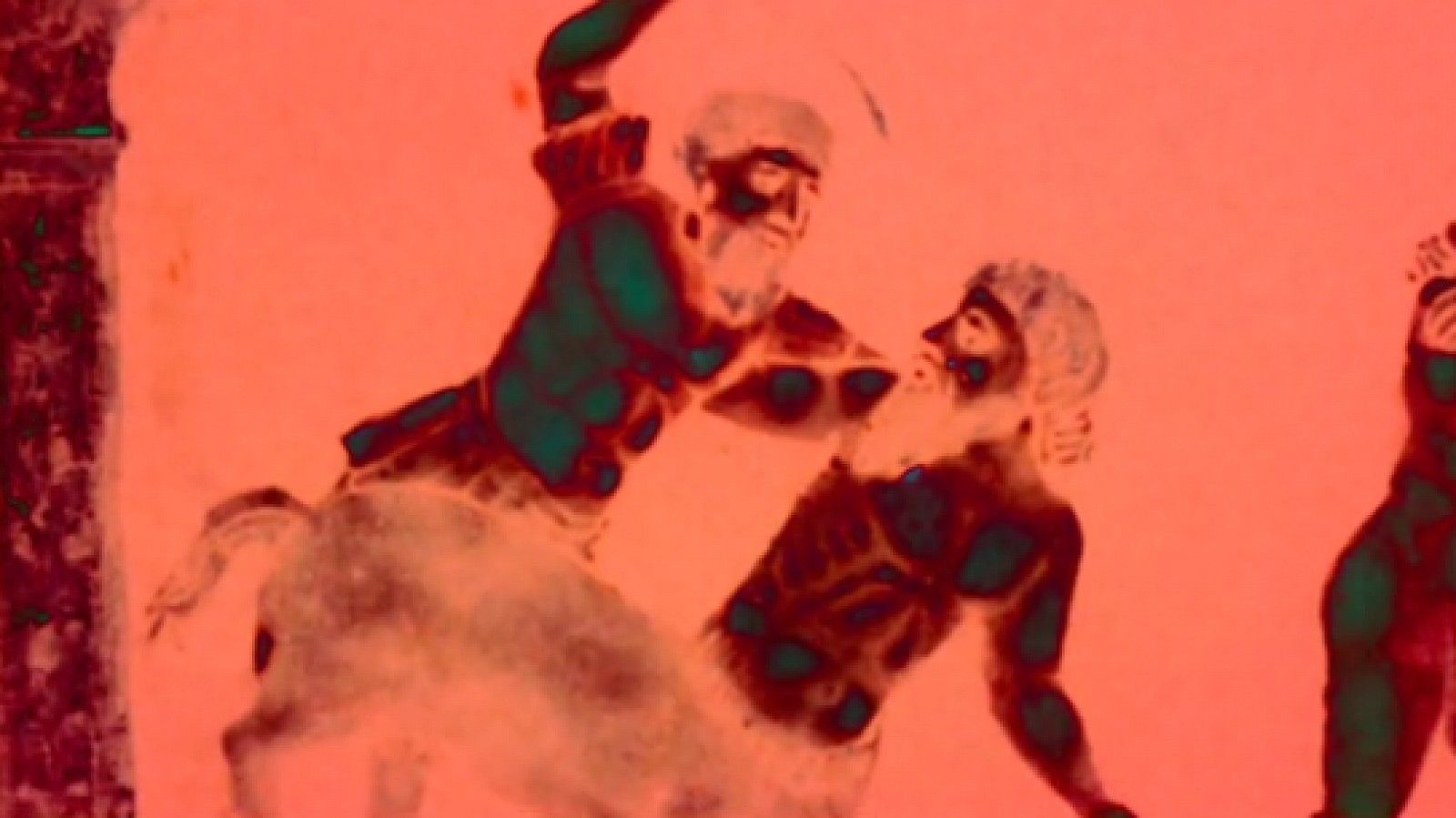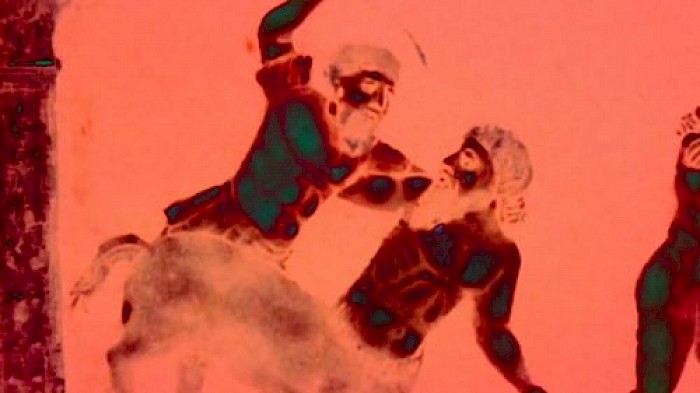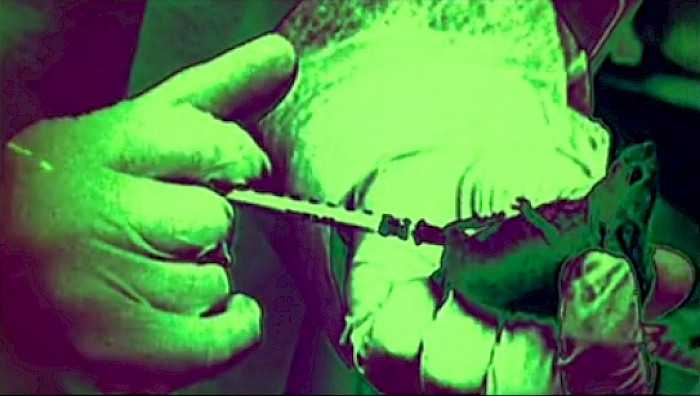Shown in [REPORTÉE EN SALLE] Compétition #7.
Synopsis
A fearful civilization tries to survive in the violent universe it inhabits; then, over time, the fear will go away.
Text of the selection committee
In this very personal revival of art historian Aby Warburg’s Atlas project, filmmaker Luis Ricardo Garcia Lara develops a hybrid language, between found footage, photo-novel, and museum wandering. The primary pictorial sources are various works gleaned from Parisian museums, but they never appear as they are: the filmmaker refilms them, most often by pre-cutting them, by editing them on the spot during filming with tight framing and a hand-held camera. Later, the images are digitally reworked, in a montage with a particularly tenuous rhythm, where we witness a profusion of representations, violent collisions between the works. We should also mention the great work of the soundtrack, which mixes a very precise musical score with a voice-over telling us a cosmogonic story. This voice, both near and far, runs through a text read in an invented language, which is - difficult work - made extremely credible by the prosody of the actor-ice, whose timbre escapes all genres.
Translated with www.DeepL.com
– T.D.
What is the starting point of your film ?
While visiting museums and exhibitions in Paris, I became interested in the question of the relation of the work to the place where it is exhibited, that is, most of the time in museums. Sometimes you can find an object that is exhibited at the Jeu de paume, then at the Quais Branly. You can jump from one museum of contemporary art to another that is of science or anthropology. Basically, what interests me is to see how you categorize an object according to where you put it. Museums construct, from different themes, different narrative forms. We group together a series of works and from a created subject, the work will take on a different value. So I wanted to play with this, in the construction of a fiction based on the different works of about thirty museums in Paris. In a certain way, perhaps more pretentious, snobbish, I wanted to desacralize, to take out of the museum certain works to transform them into something contemporary, to give them back their original power. I find the idea of enclosing a painting by Delacroix or Picasso in a museum a bit closed, restricted, even old-fashioned. All their freedom or particularity is locked up in a museum full of tourists for whom the passage and the visit to the museum is an obligation like going to Montmartre or walking on the Champs Elysées. So I wanted to give them back their power by taking them out of there, and insert them in the rhythm of today, in an aesthetic and artistic research that is freer than the space where they are confined. A bit like what the Austrian filmmaker Peter Tscherkassky does with old films.
A large number of images are included in your film. What was your creative process?
Initially, I had a short story that I had written some time ago that had a very strong connection with the film I was shooting at the same time I was thinking about Atlas. Because it has to be said that Atlas is part of a diptych called “the diptych of Re-signation”. So I took it and cut it into several parts. In each of these parts there were about ten words, concepts that summarized that part. So I looked at all these words, all these concepts, and I looked into which museums in Paris I could find works that could represent these concepts, these words. So I chose about thirty museums, and then I visited them. I had with me two old iPhones and several applications in cell phones to play with textures and colors. I also had three lenses for the phones that helped me film works that were sometimes arranged in a complex way in the museum spaces. Sometimes I would come out with a hundred videos of a few seconds from a museum, sometimes only with a dozen videos. Then there was a lot of de-rushing work to select the images that we were going to use for each part of the film and that had to match the voice-over that was on it.
How long did it take to make your film?
It’s complicated to know because between the rewriting of the short story and the post-production I was also shooting the other part of the diptych, I was working to earn money, so I don’t know. But I guess we did it in a year or a year and a half.



